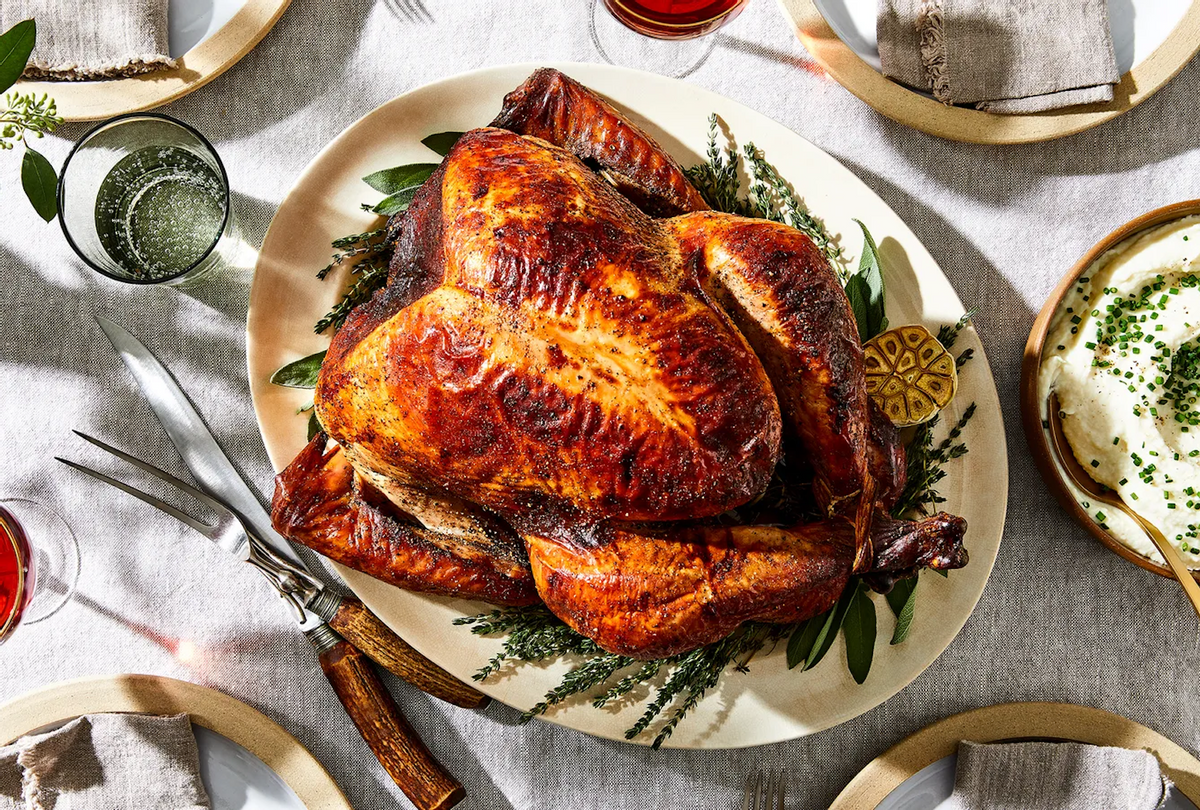If you've wet-brined a chicken or Thanksgiving turkey, odds are you're familiar with the concept of dairy as the base of that brining solution. The lactic acid in milk, yogurt , buttermilk, even feta helps tenderize the bird by breaking down protein walls. Though the result is incredibly moist meat, the dairy-brining process is messy, there's no way around it. But what if I told you that the most tender buttermilk-brined turkey actually requires no liquid at all?
Meet the dry-buttermilk-brined turkey. You'll mix powdered buttermilk — literally just a dehydrated version buttermilk — with salt and pepper, and rub it all over the skin.
In 2020, Salt, Fat, Acid, Heat author Samin Nosrat adapted her book's wildly popular buttermilk-marinated roast chicken recipe for a spatchcocked turkey in The New York Times. Indeed, it's easier to place a butterflied bird in a bag of buttermilk than a whole turkey, but the fact remains that you still need quarts of buttermilk and a two-gallon bag. Now I genuinely don't mind a project on the average evening. But on Thanksgiving, when I'm in the midst of cooking multiple other dishes, I want the simplest possible recipe with the highest quality result. With a dry-buttermilk-brined turkey, the only equipment needed is a sheet pan — and cleanup truly couldn't be easier.
Recipe: Dry-Buttermilk-Brined Turkey
When applied to turkey (or chicken for that matter — yes, I tested it with chicken too!) dry buttermilk acts exactly like its liquid counterpart. The lactic acid, still present in the dehydrated product, works with the salt to tenderize and season the meat. Once roasted, the sugars in the powder begin to caramelize, rendering a glistening, deeply browned skin. Whichever size bird you plan to brine, use about 1 tablespoon of dry buttermilk, ½ tablespoon kosher salt (I use Diamond Crystal), and ½ teaspoon freshly ground black pepper per pound of meat.
One thing feels important to note: I roast all turkeys (and chickens) directly on sheet pans, not on a roasting rack. Though you may think a roasting rack is the secret to crispy poultry skin, it's not. In fact. There really isn't a way to roast a whole bird and get crispy skin — there's simply too much steam in the oven and juice in the meat when cooked low and slow, the best way to yield tender meat. You'll have a better chance of slightly-more-crisp skin by letting the turkey dry brine in the refrigerator, uncovered, for a full 24 hours, and drying any juices that leach out during the process before heading into the oven. Could you still make this turkey in your beloved roasting pan? Why not! But ultimately, for crisp skin, you'll need to sear poultry parts in a skillet on the stove, then finish in the oven, and that's simply a whole other thing.
Considering that dry buttermilk, which is available online and at many supermarkets, has an incredibly long shelf life (we're talking years, if not more) even after opening, and can be used exactly the same as the liquid, I personally tend to keep a container in the fridge at all times. So if you don't use it all with this recipe, simply swap it in according to the package directions in any recipe that calls for buttermilk. When it comes to brand, any brand of buttermilk powder will do (and there are dozens!), but I'm partial to Sacco, Bob's Red Mill, and King Arthur Flour.




Shares